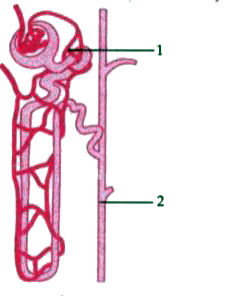The structures in a human that provide balance are located in the :
pinna
middle ear
inner ear
eustachian tubes
The correct Answer is:B
middle ear
Related Playlists
- BOOK - ICSECHAPTER - NEURAL CONTROL AND CO-ORDINATION EXERCISE - TEST YOUR PROGRESS ( OBJECTIVE TYPE QUESTIONS ) (Fill in the blanks with appropriate words.)14videos
NEURAL CONTROL AND CO-ORDINATION
- BOOK - ICSECHAPTER - NEURAL CONTROL AND CO-ORDINATION EXERCISE - TEST YOUR PROGRESS ( OBJECTIVE TYPE QUESTIONS ) (State whether the following statements are true or false .)9videos
NEURAL CONTROL AND CO-ORDINATION
- BOOK - ICSECHAPTER - MORPHOLOGY OF FLOWERING PLANTS EXERCISE - NCERT TEXTBOOK QUESTIONS WITH SOLUTIONS25videos
MORPHOLOGY OF FLOWERING PLANTS
- BOOK - ICSECHAPTER - NEURAL CONTROL AND COORDINATIONEXERCISE - (Review question) long answer20videos
NEURAL CONTROL AND COORDINATION
Similar Questions
The structures in a human body that assist in body balance are located in the
View SolutionThe structures in a human body that assist in body balance are located in the
View SolutionDraw the structure of a human heart and label its parts.
View SolutionIn the structure of a human neuron, the nodes of Ranvier are present on
View SolutionIn humans, kidneys are located between the levels of
View SolutionHow many endocrine glands are located in human brain
View SolutionThe structure which provides vascular connection between the fetus and uterus is called __________.
View SolutionThe diagram given below is that of a structure present in a human kidney. Study the same and answer the questions that follow:

Name the structure represented in the diagram.View SolutionSupportive skeletal structures in the human external ears and nose tip are of
View SolutionSupportive skeletal structures in the human external ears and nose tip are of
View Solution


